Looking for a quiet, pollution free weekend getaway from Delhi, Agra or Jaipur? Did you hit the snooze button too many times and now you don’t have safari permits for Ranthambore Tiger Reserve? If you’re not hell bent on spotting tigers, then Sariska is a great alternative. Not only can you spot wildlife but you can also visit some off-the-beaten path historical places in and around the Sariska Tiger Reserve, including Bhangarh Fort – supposedly India’s most haunted Fort! Visit and follow our Instagram page to see photos from Sariska and other national parks that we cover.
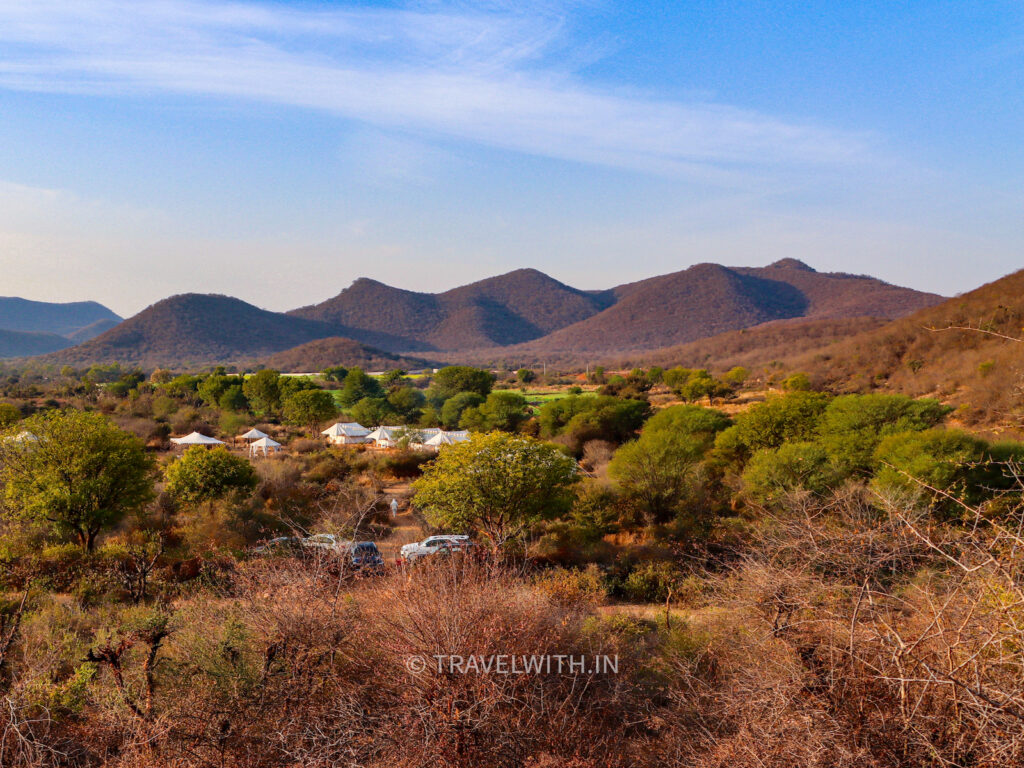
Luxury Camps in Sariska
Our hotel partners in Sariska include personally tried and tested luxury tents / glamping (October to March), heritage forts and jungle lodges.
Sariska Tiger Reserve was once a hunting preserve of the Alwar royalty. By road it takes about 2.5 hours from Jaipur, 04 from Delhi and 3.5 from Agra. Sariska is a popular stop for people doing the ‘golden triangle’ (Delhi-Agra-Jaipur) route. Sariska National Park is spread over 800 sq. km. and the forest is mostly tropical, dry deciduous, grasslands and rocky as it is part of the Aravali range.
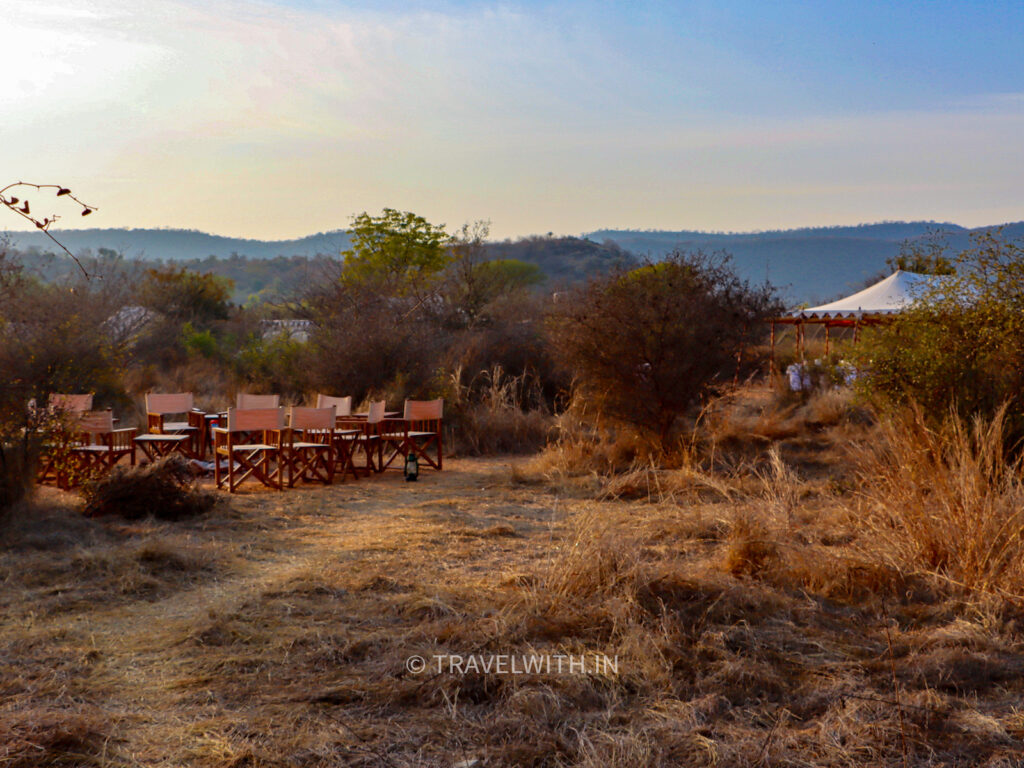
Glamping in Sariska
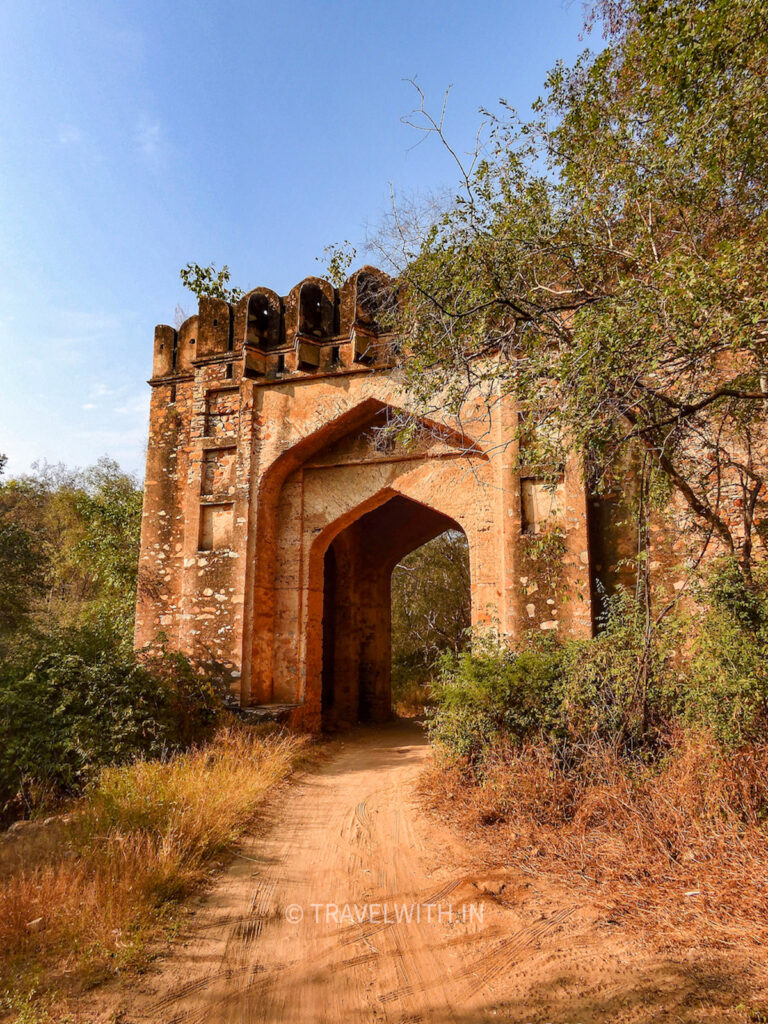
One of the gates of Kankwadi Fort
Deep inside the tiger reserve is Kankwadi Fort. Although now abandoned, the Fort can be visited when you do a jeep safari. Kankwadi Fort is where Aurangzeb (Shah Jahan’s son) briefly imprisoned his brother Dara Shikoh.
Besides the Fort, Sariska Tiger Reserve also has an ancient Hanuman temple called Pandupol which is named after one of the Pandavas Bhim from the Hindu epic Mahabharata. The temple is a practicing temple and visitors are allowed to enter the tiger reserve every Tuesday and Saturday in their own vehicle at either one of the two safari entry gates – Sariska and Tehla Gate. Part of the route to the temple is through the core part of the national park and temple worshippers are allowed to enter from 8:00AM to sunset.
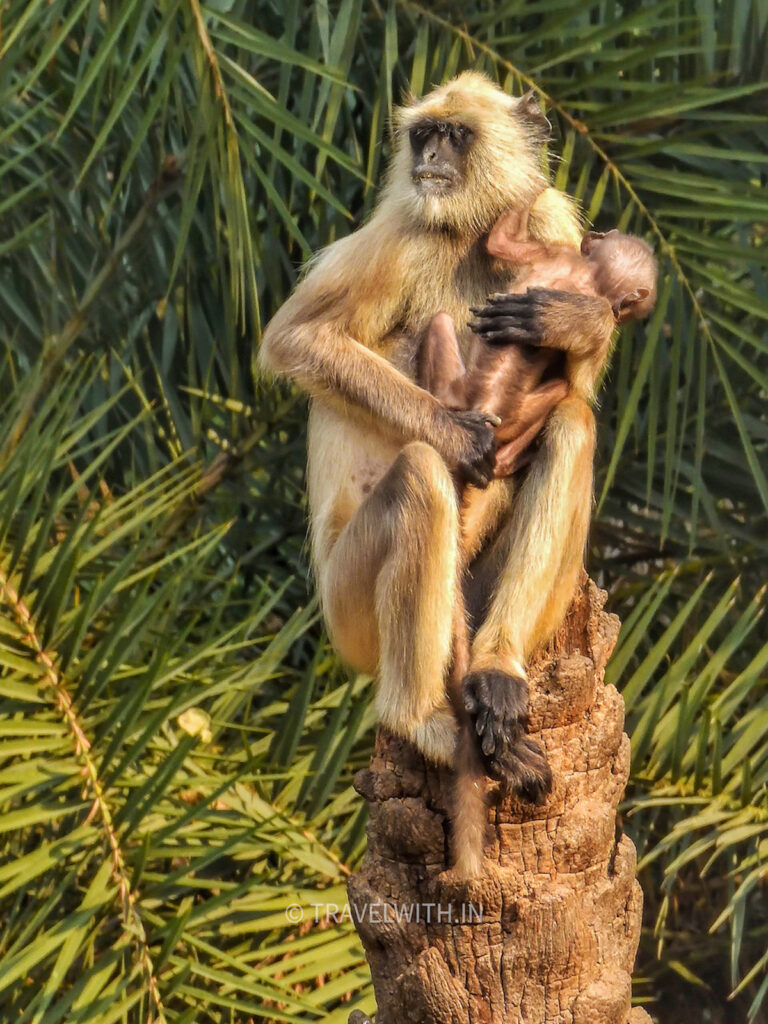
Baby Langur Monkey with Mother, Pandupol temple, Sariska
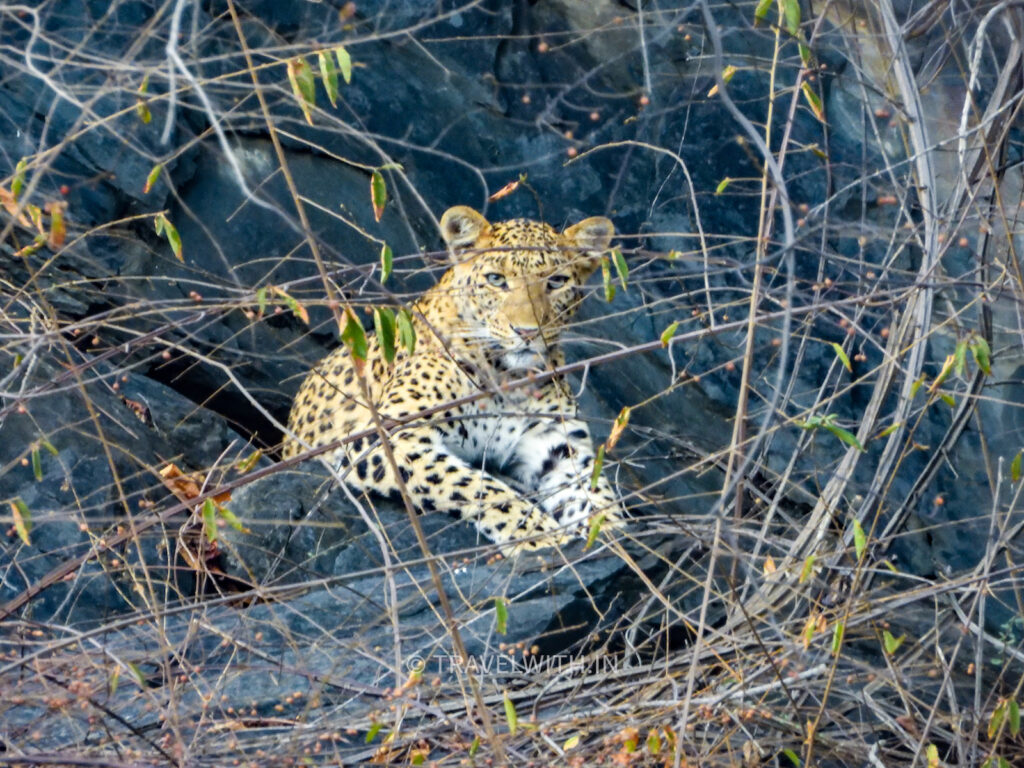
Leopard during Jeep Safari in Sariska
If you are visiting the Park for the wildlife then you should know that on Tuesdays and Saturdays the ancient temple – Pandupol inside the national park is open for worshippers. So cars, motorcycles and buses plough through the tiger reserve often disturbing wildlife and your experience. Despite this the drive to Pandupol is very scenic and worth a visit if you happen to do the safari on a Tuesday or a Saturday. Be careful of monkeys and do not carry anything in your hand that could be mistaken for food. If you are going for safaris then you can enter the Park at 7AM and go to parts of the Park where the temple traffic is not that prevalent.
As mentioned above, there are two entry gates to Sariska National Park – Sariska and the Tehla gate. Both these gates are 80km apart from each other on the highway. Both the gates have resorts and hotels located near them. Twenty odd jeep safaris are allowed every day from the Sariska gate and 7 from the Tehla gate. If you stay at a resort near one of the two gates you have to enter the Park from that gate itself. If you exit from the gate other than the one you entered from, then you will have to drive outside the Park for 80km to reach the resort that you booked near the gate from where you entered the National Park.
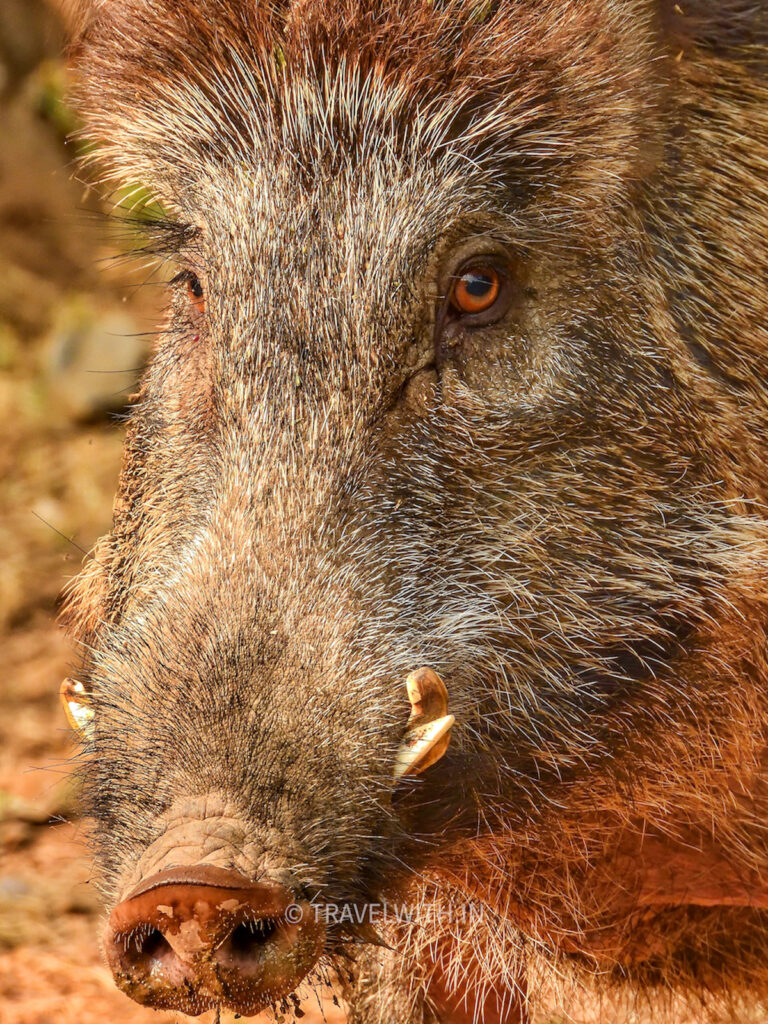
Wild Boar (Male)
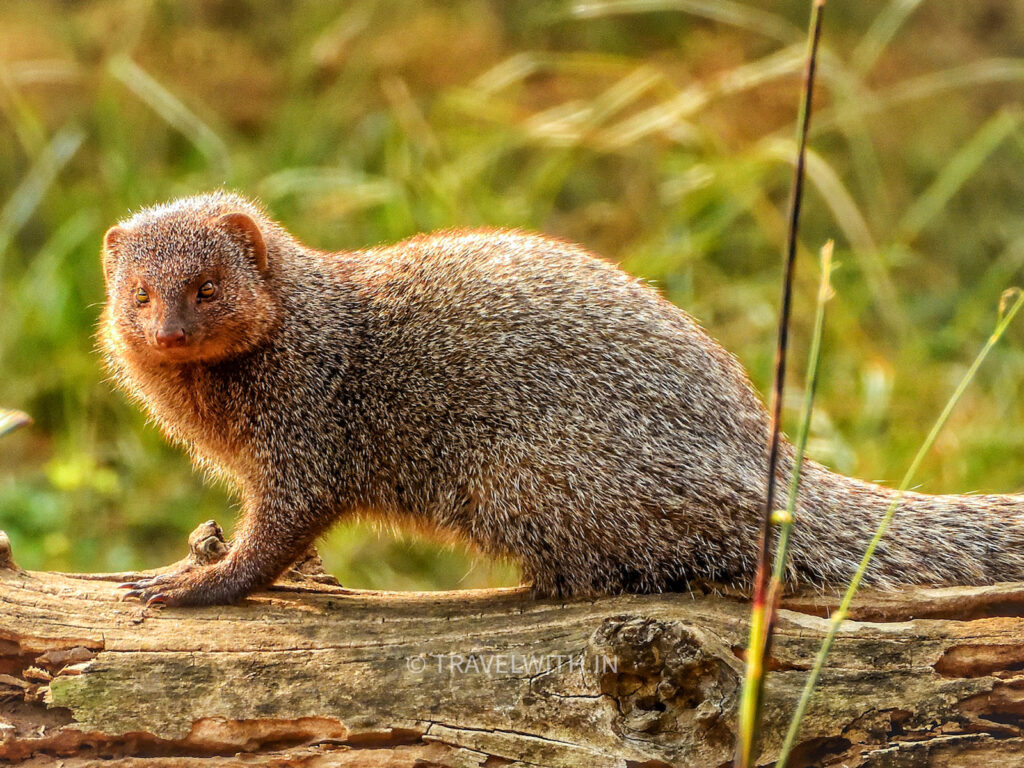
Indian Grey Mongoose
The good news is that jeep safaris can be booked without booking months in advance. This is because Sariska is a very large national park and the tiger population although increasing is less than it is in Ranthambore and other tiger reserves in the country. The Park lost it’s entire tiger population at the turn of the century to poaching and the government had to relocate tigers from Ranthambore Tiger Reserve to Sariska.
As of 2022, there are 25-30 tigers in Sariska and several leopards living in an area of 880 sq. km. Due to hunting and other forms of human disturbance, Sariska’s big cats are still shy, unlike the big cats in other national parks.
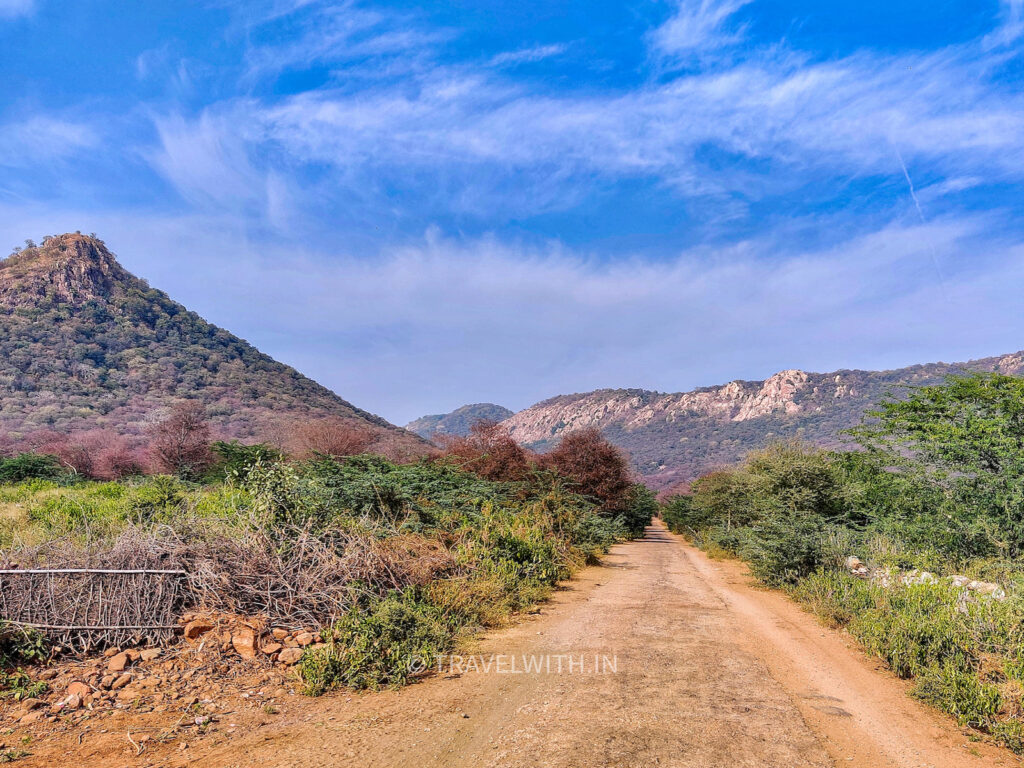
Jeep Safari in Tehla, Sariska National Park
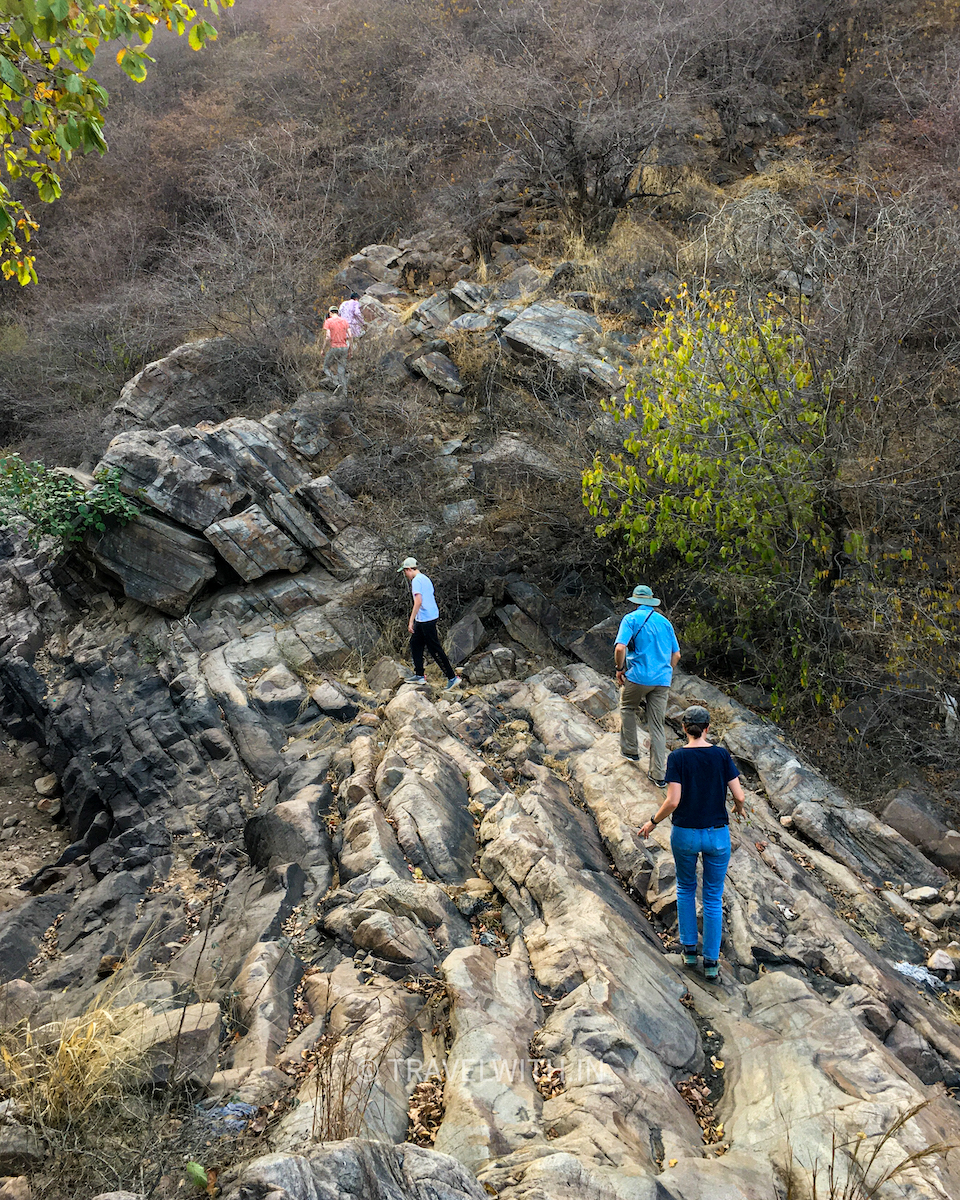
Guided hikes near Sariska National Park
The Park is abundant in other wildlife. You may spot herds of sambar deer, cheetal, wild boars and nil gai (blue bull). Several species of migratory birds visit the park every winter and Indian Peafowls are found in the hundreds. It is recommended to do at least two jeep safaris – one towards Kankwadi Fort and another in one of the three designated routes. But please do your safaris on days other than Tuesday or Saturday.
Besides the jeep safaris, you can visit Neelkanth temple ruins dedicated to Lord Shiva and statues belonging to the Jain religion, from the 6th and 9th century. This temple is closer to the Tehla gate of Sariska tiger reserve than it is from the Sariska gate. Part of the drive to the temple is rough due to bad roads so be prepared. Once you get through that hurdle, the temple and ruins make it worth the pains to get there. It is believed that several temples in the area were destroyed during the Mughal era. The intricate carvings and sculptures are a visual treat for anyone who appreciates history and architecture.
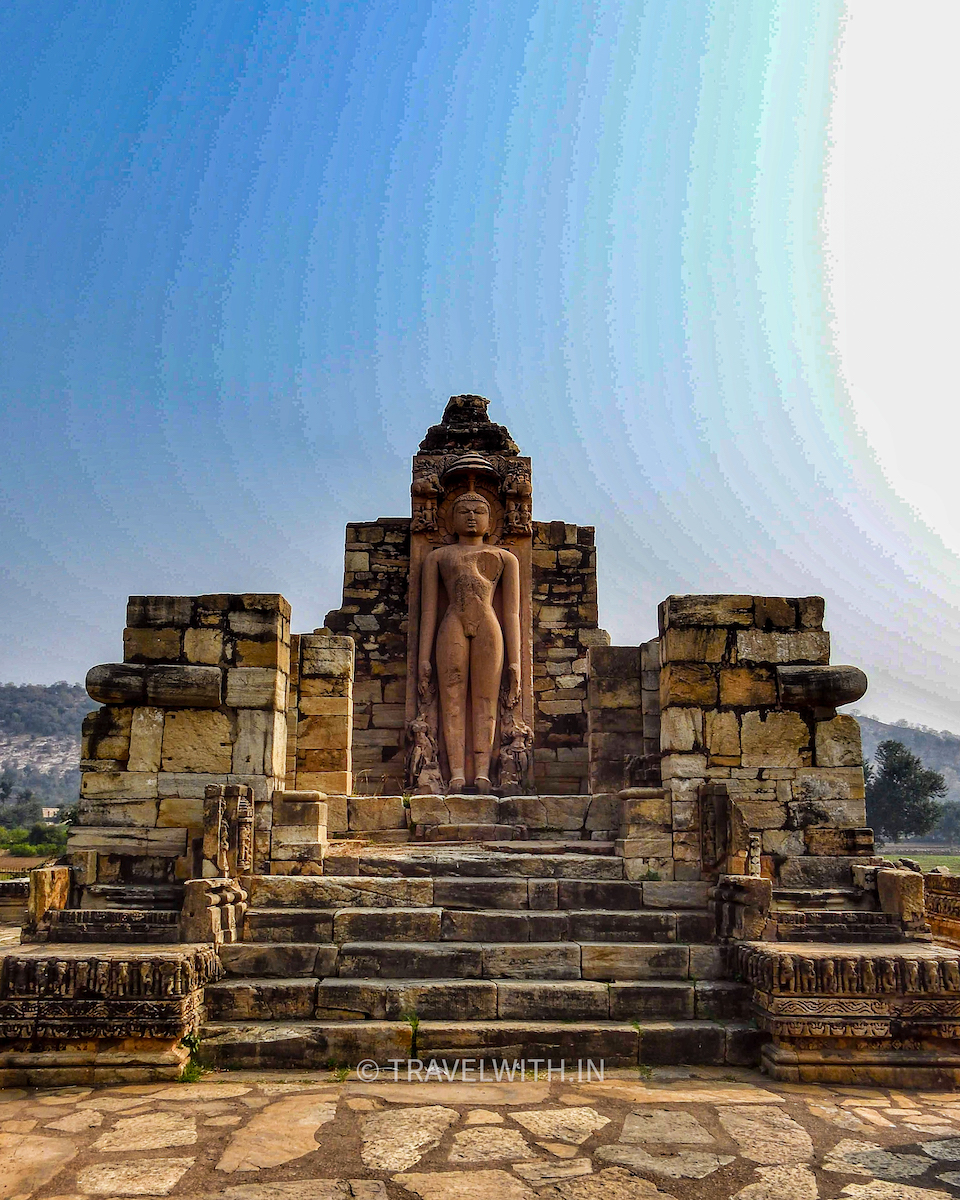
Shantinath, Jain Tirthankara in Neelkanth Mahadev temple
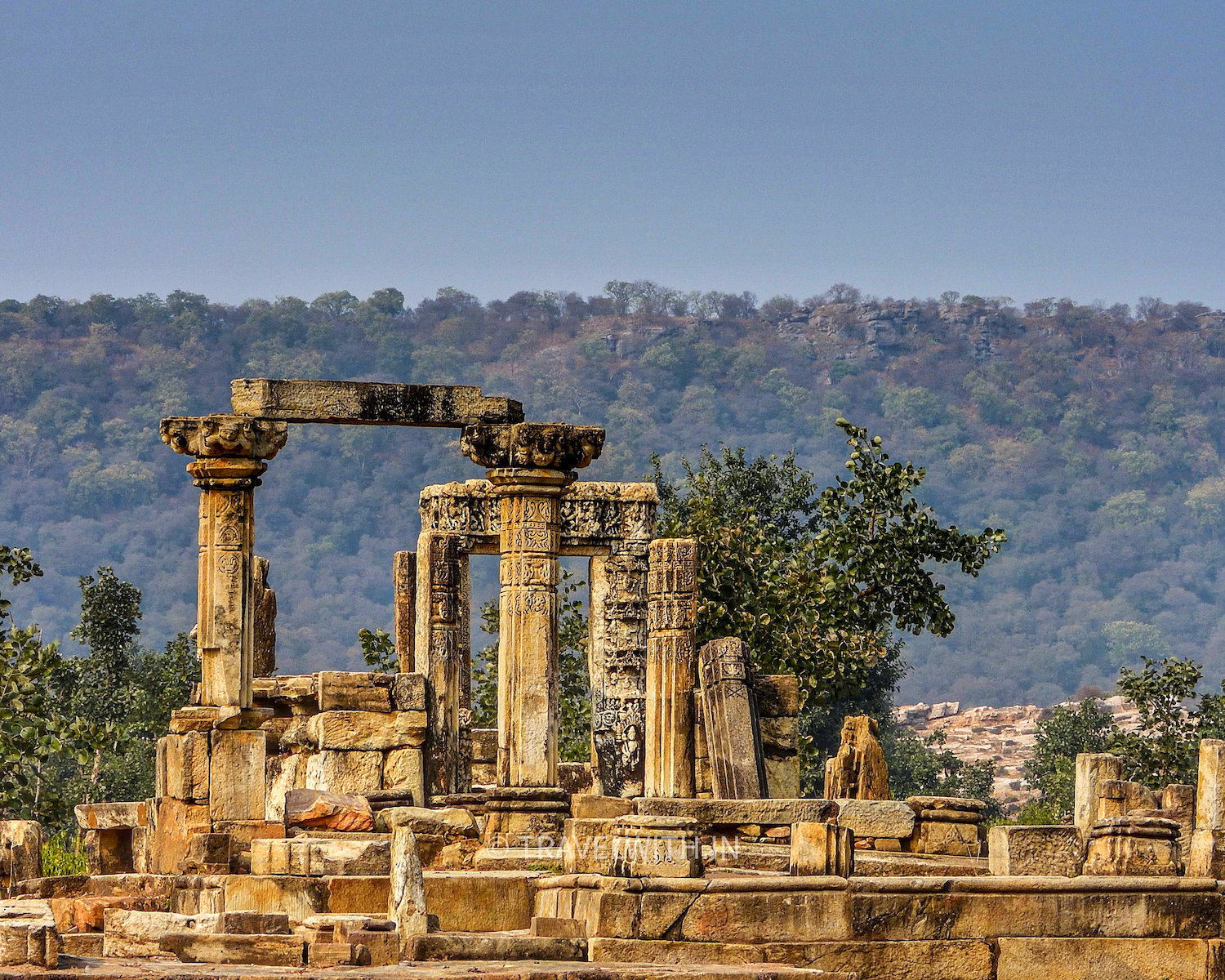
Neelkanth Mahadev Temple and Ruins
Although steeped in history, the area is very remote and there are no guides at the temples to show you around and give you any information when you’re there on your own. However, when you book your Sariska holiday through us, you can be assured that we will arrange a knowledgable English speaking guide to show you around not just these temples but also other places of interest mentioned here.
About 40km from the Tehla gate going towards Jaipur are the ruins of Bhangarh Fort and Town – supposedly the most haunted place in India. For obvious reasons, access to the area is strictly prohibited after dark as there are stories of people not turning up the following morning. Bhangarh Fort and town was established in the 16th century as the residence of the second son of the Jaipur King – Bhagwant Das. The town and fort were abandoned in the 18th century after a series of famines that made life difficult for it’s residents.
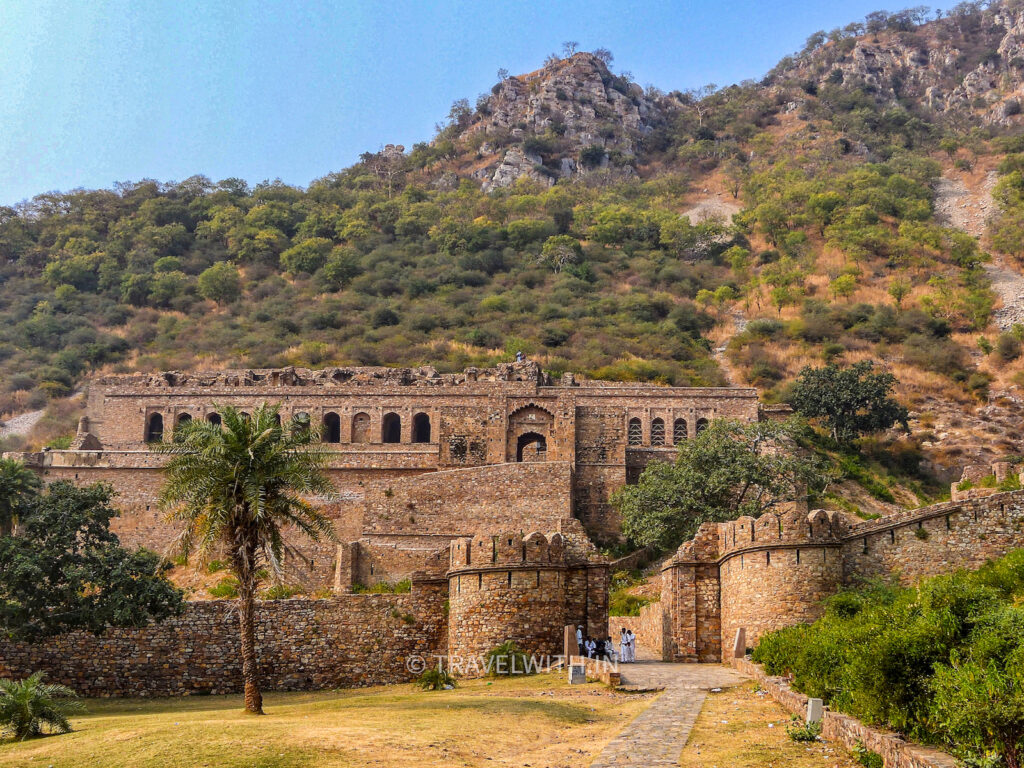
Bhangarh Fort
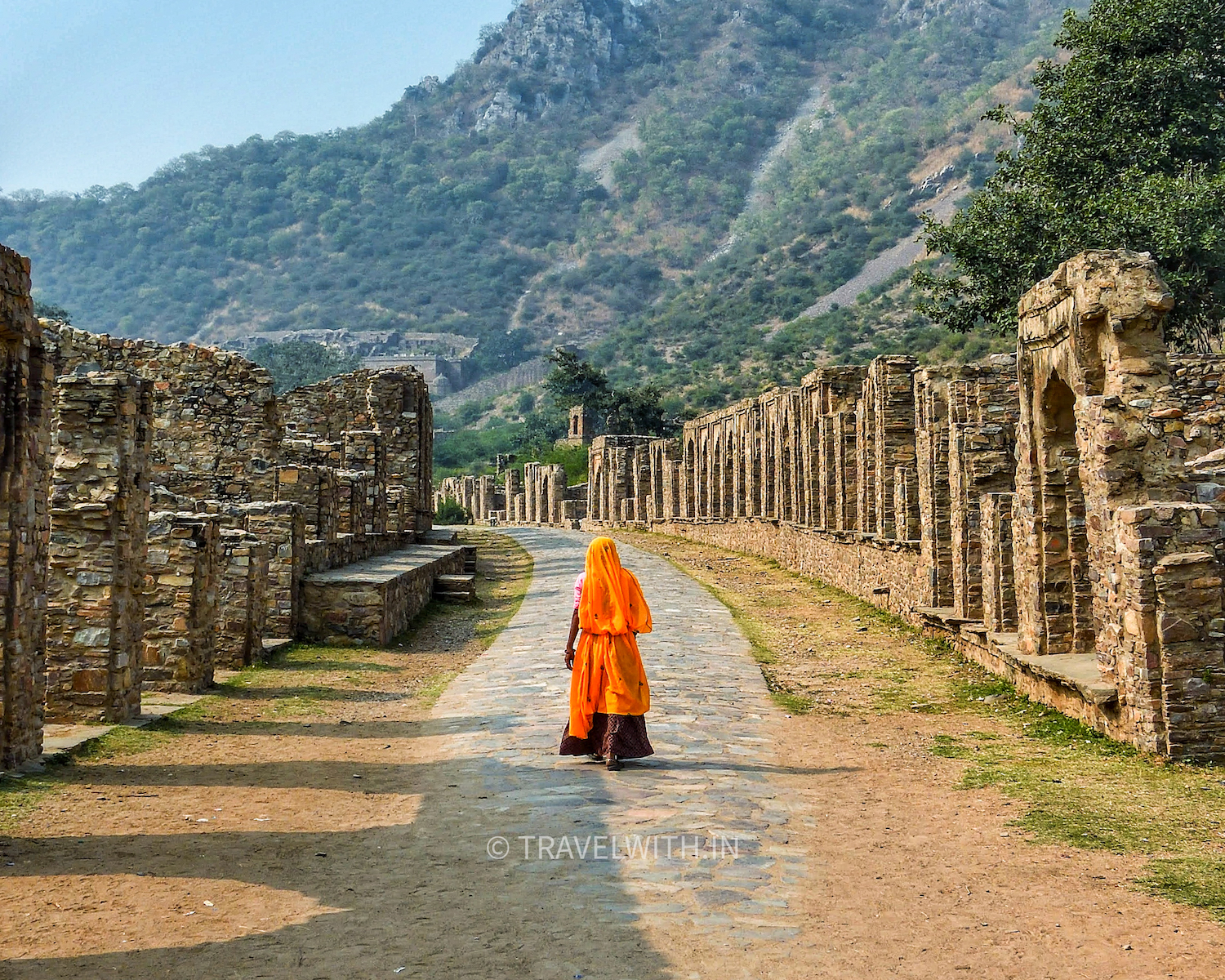
The abandoned village of Bhangarh
I didn’t venture to the Fort after sunset (you’re not allowed to) but I can assure you that during the day I saw no spirits in any form. The road to the fort is dotted with ruins of ancient shops and houses of the town residents. It is only when you get closer to the Fort complex do you get to see it’s grandeur and magnificence. Built on a hillside overlooking the valley below, the Fort’s compound has several havelis and temples, the biggest being Gopinath Temple.
You can walk all the way up and inside the Fort. Mostly in ruins but the views from the top are outstanding. Sit for a bit, catch your breath and soak in the amazing landscape in front of you. I’m sure Bhangarh would look even more beautiful (or haunting) at sunset though I would also be in a rush to get out of the fort as soon as my legs can drag me, lest I get possessed by the wandering spirit of a maharaja!
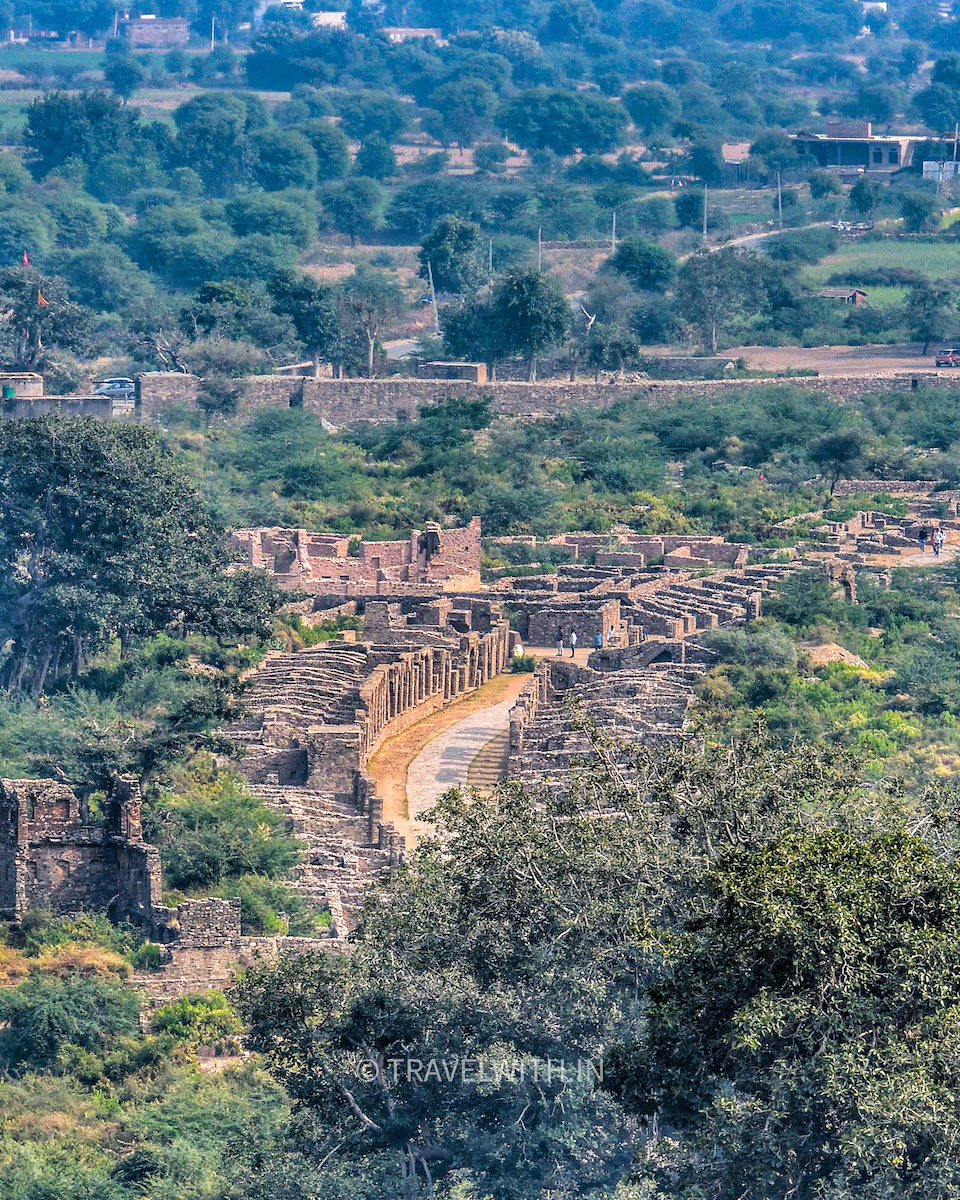
View of the village from Bhangarh Fort
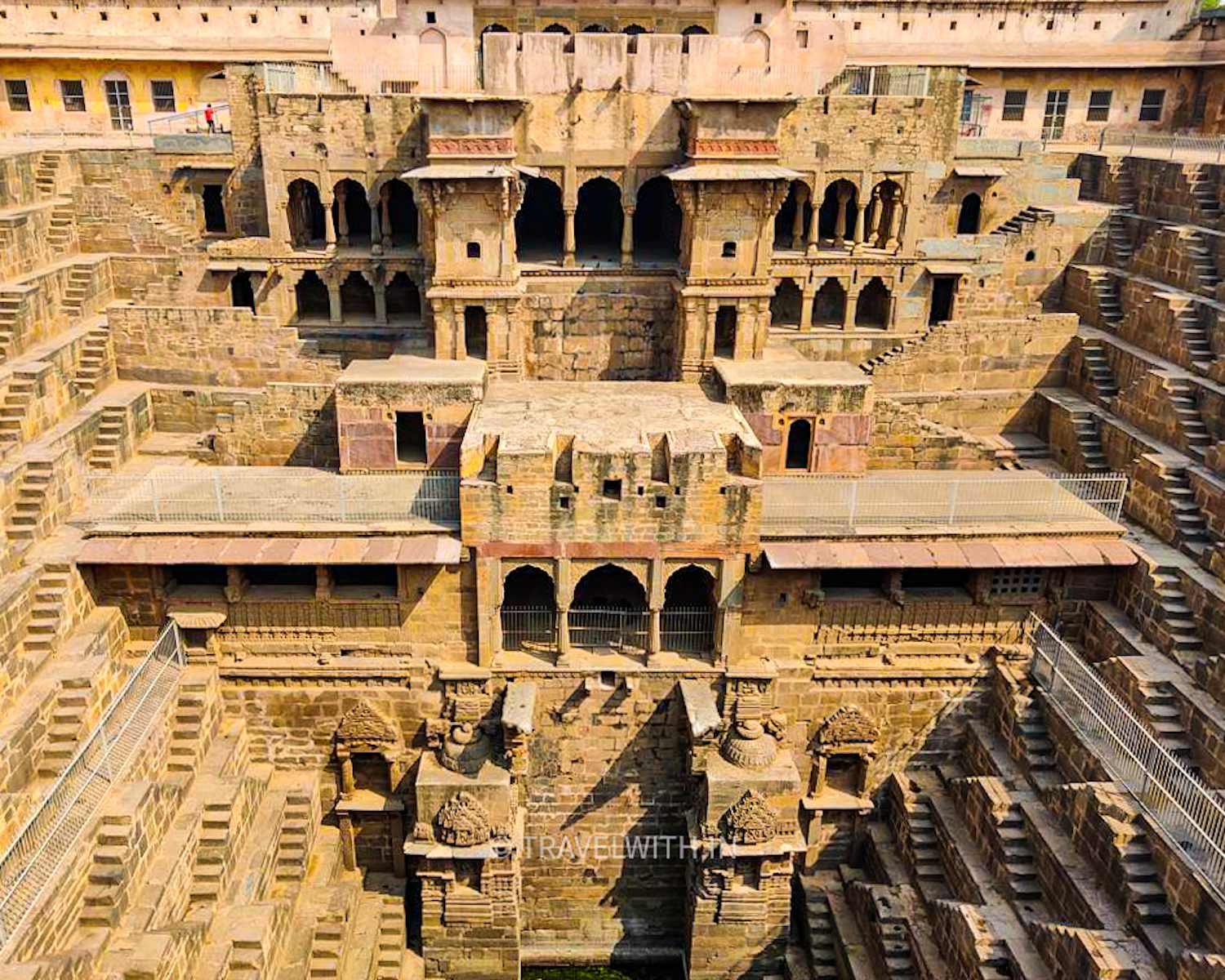
Chand Baori, Abhaneri
Another stunning but lesser known attraction an hour drive from the Tehla gate of Sariska is Chand Baori (Stepwell). Built in the 9th century by Raja Mihir Bhoj of the Gurjar Pratihara dynasty, the 13 storey deep stepwell has more than 3,500 steps. It is believed to be the world’s oldest stepwell. In the past, people were allowed to go down the steep and narrow stairs, however, in recent times, the government put a stop to it after people tripped and injured themselves severely. All around the stepwell you can see magnificent sculptures of Hindu gods and godesses. The Pratihara dynasty was well known for their intricate and near perfect design of temple construction. More such fascinating temples are a couple of hours drives away from Agra. See Bateshwar temples, Morena.
I personally like staying near Tehla gate as it is much quieter and the forests around that area are much richer in fauna than the ones around the town of Alwar and the Sariska gate. The below attractions are within driving distance from your hotel if you’re staying in Alwar city or near the Sariska gate of Sariska National Park. It is recommended to carry bottled water and packed lunch when visiting these places as they’re remote and there may not be anything worth stopping by to grab a bite.
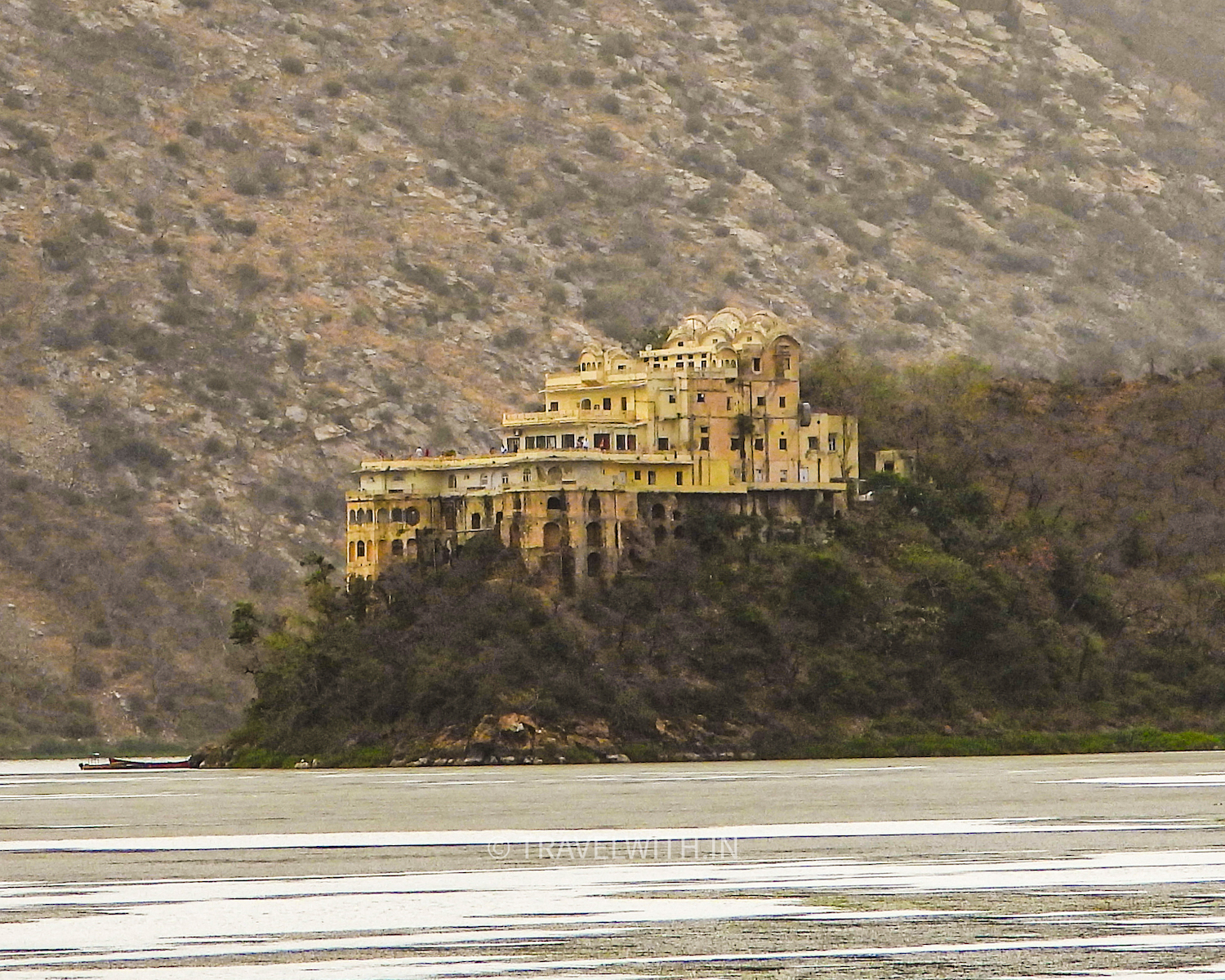
Siliserh Lake Palace, Alwar
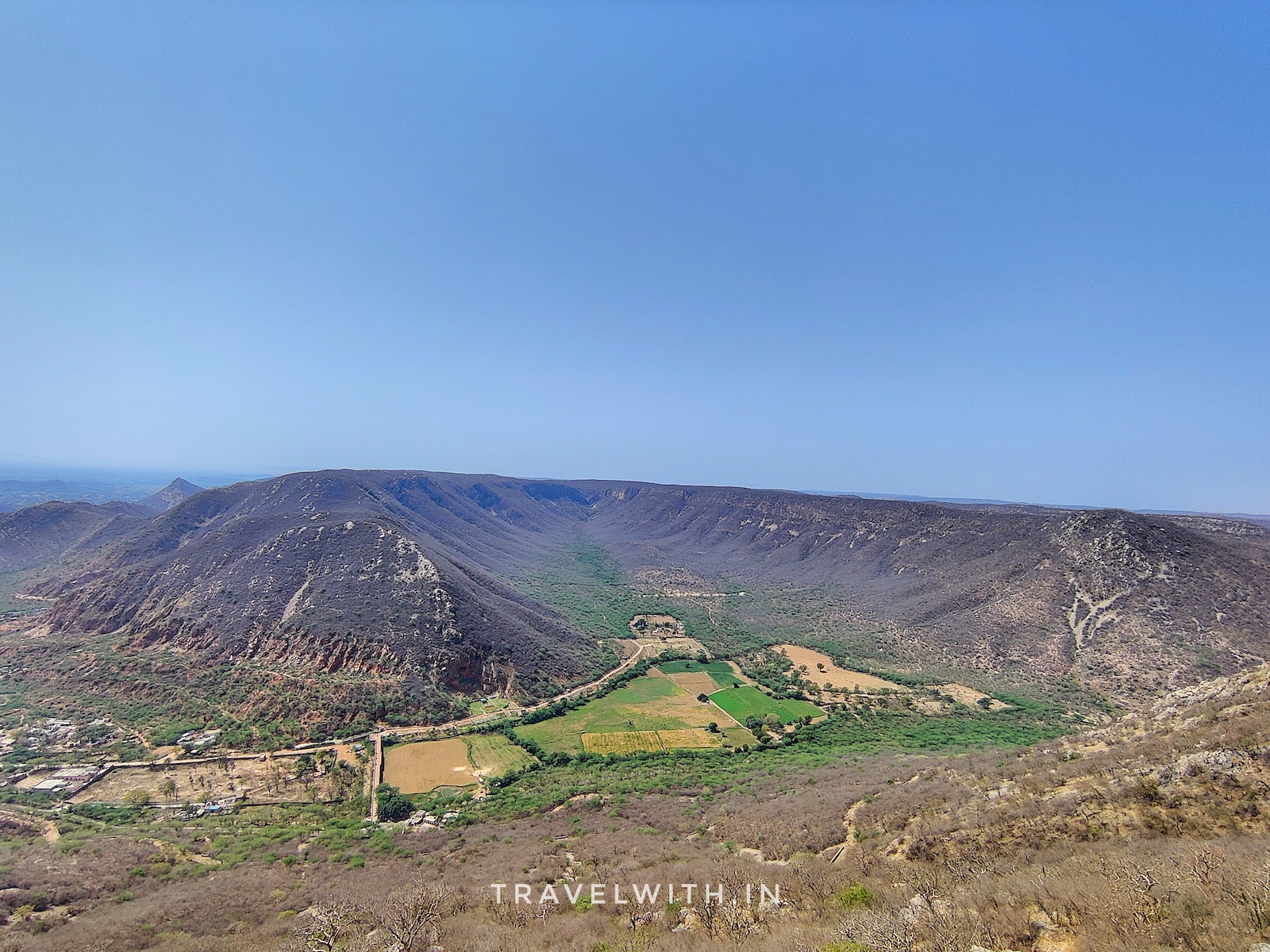
The view from Bala Qila
When there you can hire a 4×4 vehicle to visit the Bala Qila or the Fort that was never conquered in battle. This area is also densely forested and if you make it there early then chances of spotting wildlife are pretty good. The Fort has commanding views of the entire city of Alwar on one side and the Aravali hills on the other. Other than the actual Fort, you can also see ancient stepwells and hunting lodges as you make your way up the hill. The ancient wall marking the boundary of the Fort is also very impressive.
Another interesting attraction rarely visited by tourists is the towering rock formation and waterfall at Garwaji or Garbhaji which is a few kilometers beyond Siliserh Lake. The waterfall is not only worth visiting in the monsoon but also in the dry season. In the dry season you can walk all the way up to the waterfall, beyond which is a small temple. The priest of the temple claims that he has seen tigers, leopards and other wild animals at dark who visit the waterfall to quench their thirst.
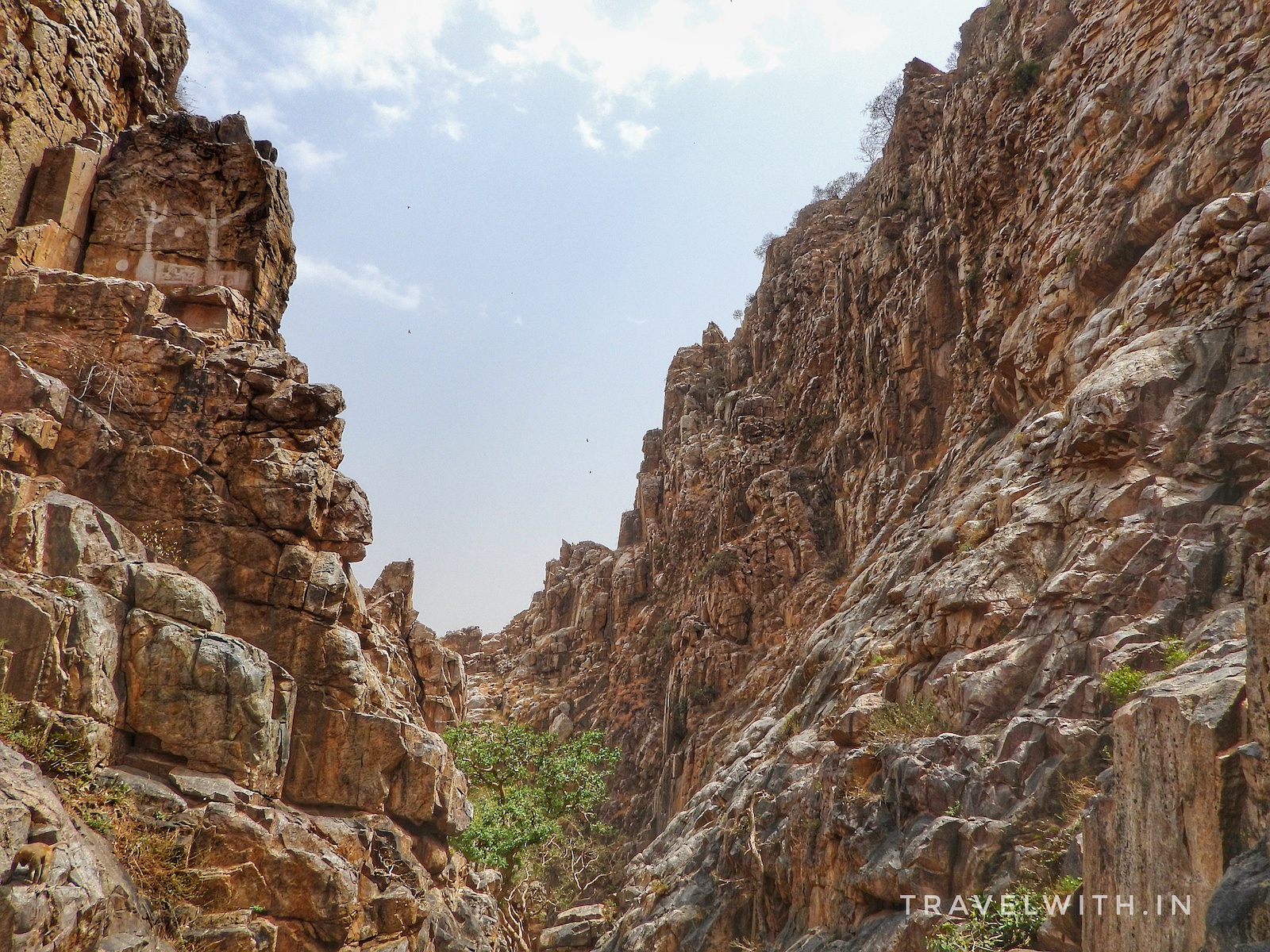
Garwaji waterfall
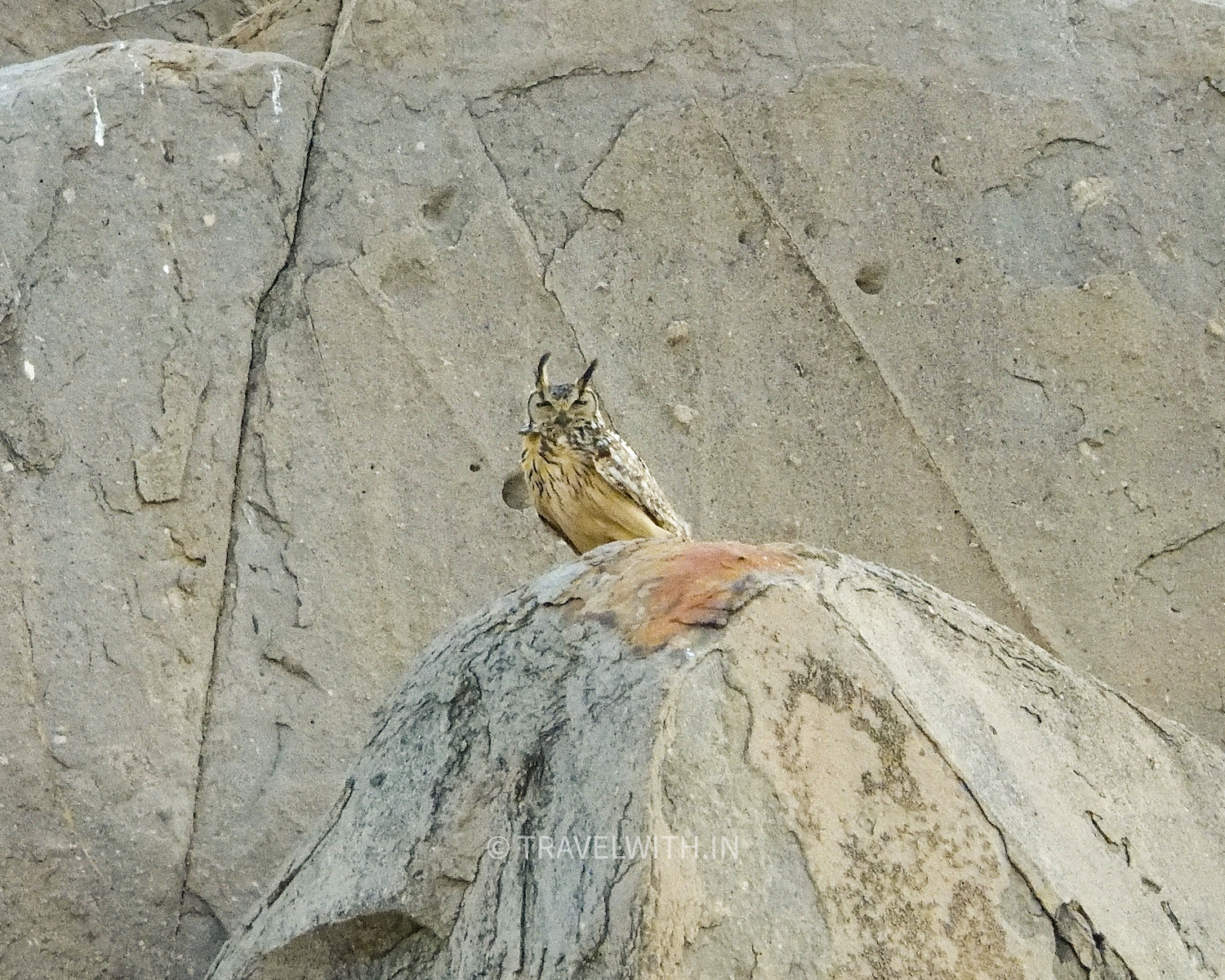
Indian Eagle Owl
If you look closely at the towering cliffs you may spot long billed vultures and birds of prey such as Indian Eagle Owl, Bonelli’s eagles and other birds of prey or you may run in to a ruddy tailed mongoose.
So here you go, a long weekend in Sariska ain’t too bad right? Jungle drives, haunted forts, gods on siesta and starry nights – can’t get any better than this – all this, just 4 hours from Delhi.


